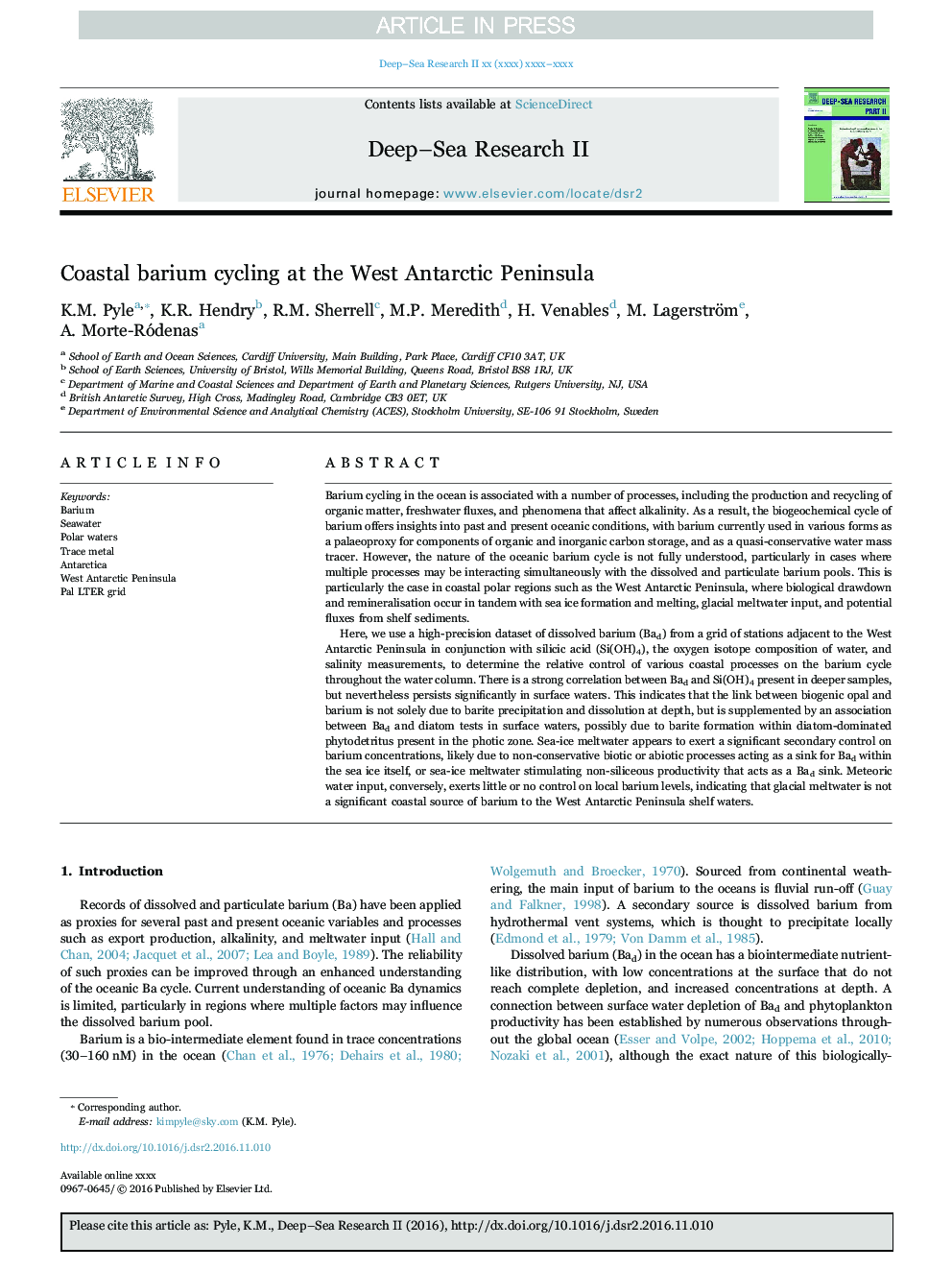| Article ID | Journal | Published Year | Pages | File Type |
|---|---|---|---|---|
| 5764878 | Deep Sea Research Part II: Topical Studies in Oceanography | 2017 | 12 Pages |
Abstract
Here, we use a high-precision dataset of dissolved barium (Bad) from a grid of stations adjacent to the West Antarctic Peninsula in conjunction with silicic acid (Si(OH)4), the oxygen isotope composition of water, and salinity measurements, to determine the relative control of various coastal processes on the barium cycle throughout the water column. There is a strong correlation between Bad and Si(OH)4 present in deeper samples, but nevertheless persists significantly in surface waters. This indicates that the link between biogenic opal and barium is not solely due to barite precipitation and dissolution at depth, but is supplemented by an association between Bad and diatom tests in surface waters, possibly due to barite formation within diatom-dominated phytodetritus present in the photic zone. Sea-ice meltwater appears to exert a significant secondary control on barium concentrations, likely due to non-conservative biotic or abiotic processes acting as a sink for Bad within the sea ice itself, or sea-ice meltwater stimulating non-siliceous productivity that acts as a Bad sink. Meteoric water input, conversely, exerts little or no control on local barium levels, indicating that glacial meltwater is not a significant coastal source of barium to the West Antarctic Peninsula shelf waters.
Related Topics
Physical Sciences and Engineering
Earth and Planetary Sciences
Geology
Authors
K.M. Pyle, K.R. Hendry, R.M. Sherrell, M.P. Meredith, H. Venables, M. Lagerström, A. Morte-Ródenas,
